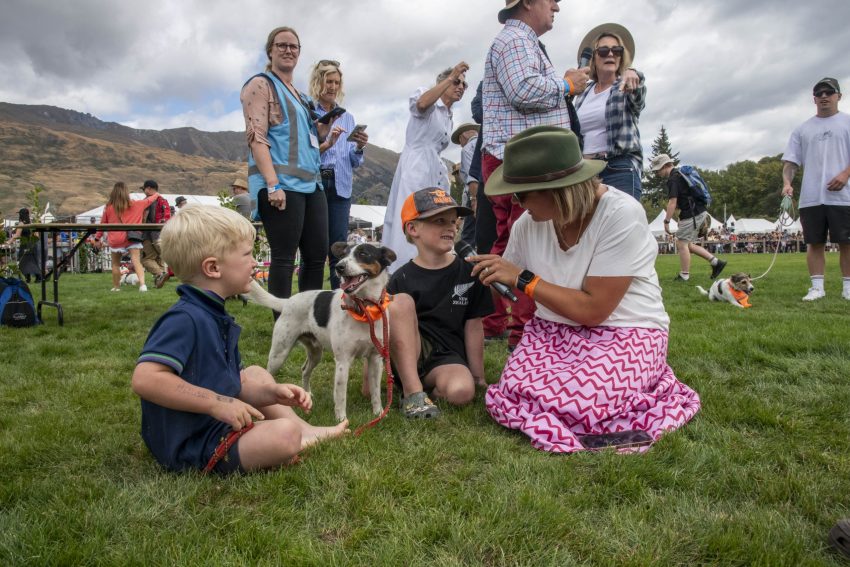A pioneer of NZ’s sheep industry
The New Zealand sheep industry lost a true pioneer with the death of Holmes Warren on March 7 this year. He was 92. By Sandra Taylor.

The New Zealand sheep industry lost a true pioneer with the death of Holmes Warren on March 7 this year. He was 92. By Sandra Taylor.
The third generation of the Warren family to farm Turanganui, one of NZ’s oldest and largest sheep studs, Holmes Warren’s early focus on fertility and productive traits contributed to development of the modern Romney, a breed that has helped lift the productivity of the NZ sheep flock.
Holmes was a founding member of the Wairarapa Romney Improvement Group, a group of breeders who banded together in the 1970s to improve the breed and continue to work together for the betterment of the breed and ultimately the performance of commercial flocks.
It was a neighbouring sheep stud, where Holmes worked after leaving school at the age of 17, (after the death of his father) that gave him insight into what ewes were capable of producing given the right mix of genetics and management.
Holmes began keeping production records back in the 1950s and these records enabled him to identify and cull poorer-performing animals.
This stud was lambing an unheard-of 130% and returning to Turanganui in 1948 aged just 19, Holmes could see the potential in their ewes which at that time were lambing 105%.
Holmes’ son Mike Warren says this early focus on fertility meant once that fertility was in place, everything else was achievable because selection pressure was there.
Holmes began keeping production records back in the 1950s and these records enabled him to identify and cull poorer-performing animals.
When Holmes first returned to Turanganui the farm was running 1300 ewes of which 700 were studs.
He gradually got rid of the commercial ewes and increased the size of the stud flock as the size of the farm increased.
Keeping individual records on some 1600 ewes was a gargantuan task before the advent of computers and this job kept the tractor driver’s wife Meg Tilsley employed for about 900 hours a year. Meg had an outstanding mind for numbers, often doing major calculations before the days of breeding values
One of the people who greatly influenced Holmes in those early years was Professor Al Rae from Massey University.
The pair were implementing new technologies on Turanganui and designing suitable systems to collect information.
Homes told Country-Wide back in 2014 that he felt terribly lucky to have had the guidance of someone who was practical as well as knowledgeable.
It was his focus on productive traits that set Holmes apart in the 60s, 70 and 80s, particularly at a time when so much store was put on physical attributes.
In those early days, Holmes was trying to market something no one could see in the sheep – he was marketing a more productive animal.
About 10% of sheep farmers were what Holmes called early adopters, selecting genetics based on productive traits as well as structural soundness, now everyone does.
In the 1960s and 70s farmers were buying rams for a mating ratio of 1:70 with Turanganui ram buyers buying an average of 14 rams. This changed when subsidies came off and farmers realised rams could easily cope with a ratio of 1:100. This meant the average number of rams bought was reduced to seven.
Holmes felt fortunate they were able to pick up more clients over that time, as the emphasis changed from wool to meat production. They were also able to increase the price of their rams.
With fewer rams, Holmes found farmers tended to look after them and get better mileage out of them. Similarly, they fed their ewes better and lambing percentages began to increase exponentially.
Despite his extensive knowledge and experience, Mike says Holmes never felt he knew what the answer to anything was, instead he drew on the skills and experience of people around him.
Even if it was just a diseased crop of swedes, he would find someone who knew more about it than he did.
Mike says what set Holmes apart was his inquiring mind, which could be frustrating. He was a very slow reader and if he didn’t understand something the first time, he would read it again and again if he felt it was important or interesting.
His vision extended beyond sheep breeding and Mike recalls him buying a run-down hill country farm in 1983 and planting 400 hectares of it in trees, an ambitious move in those days.
He was extremely disciplined about running the farm business and Mike remembers him heading off to his office every night at 7.30 and staying until 10pm, after the family had joined him for a cup of tea.
There was little downtime for Holmes and Sunday afternoons were often spent digging the garden, but Mike says the world stopped for duck-shooting and, a keen fisherman, he enjoyed fly-fishing trips to Tongariro until he was well into his 80s.
Holmes gifted each of his three children a book titled True Grit by Charles Portis which was, in essence, about digging deeper and sticking it out when others had walked away from a situation.
One of his children commented that the book could really have been written by Holmes.
Mike recalls Holmes being unflappable, even during the ram-selling season when there were double-bookings of buyers arriving at the same time, Holmes thought it was great.
His attitude was the more the merrier.
He was supported throughout his life by Adrienne who passed away 11 years ago.
Holmes remained actively involved in Turanganui until he shifted to a retirement home in Masterton just six weeks before his death. He is survived by his son Michael and three grandchildren.




